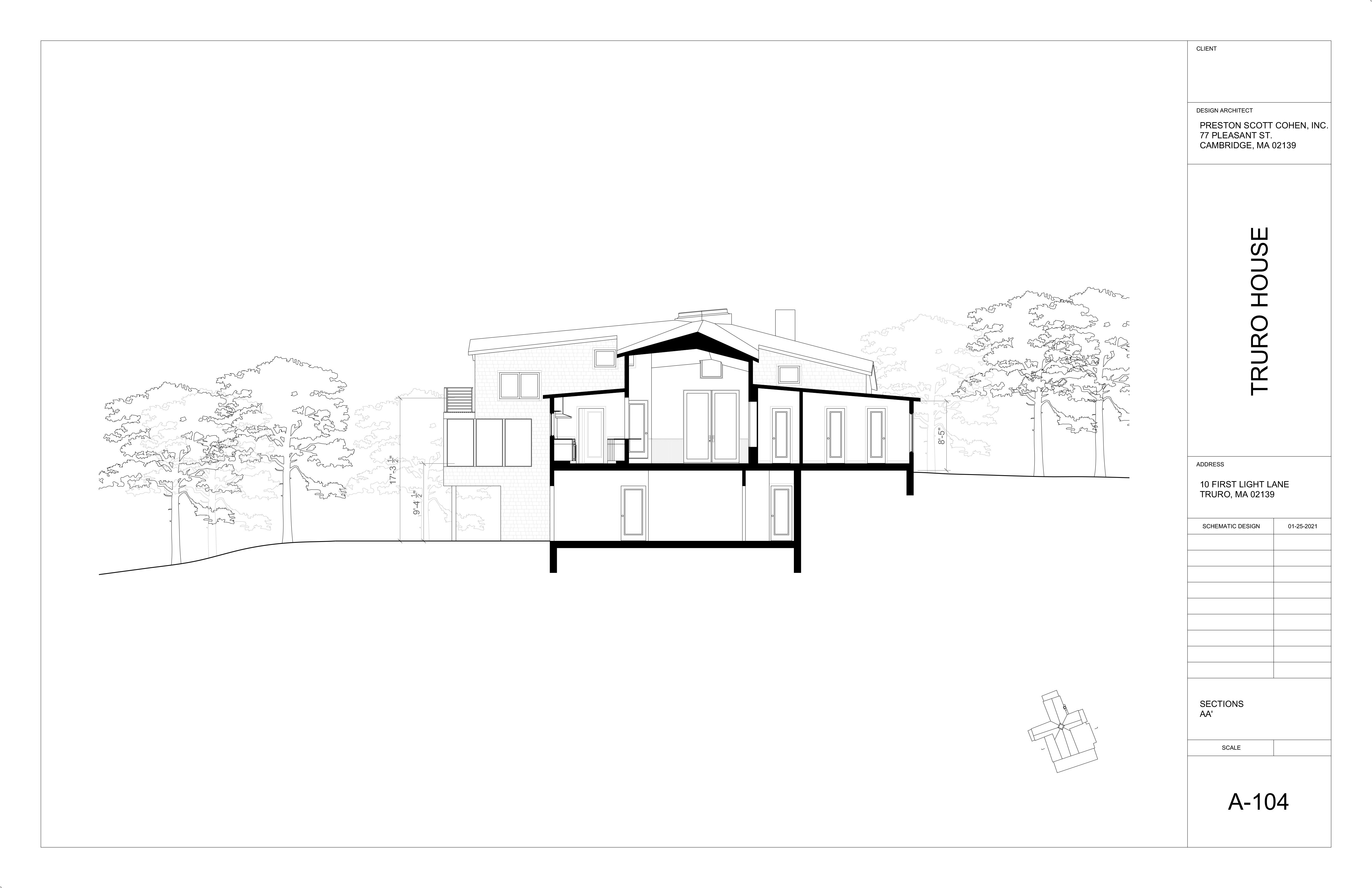TRURO HOUSE 1
“The City in the House”
Counterintuitive as it would seem, it is possible to conceive of a house that is deeply infused with the city. Alberti’s theory, that the house is a miniature city and the city a gigantic house, stands out as the most significant analogical hypothesis in architecture. The idea is most evident when the house is composed of distinct rooms and corridors, a morphology that abstractly represents buildings and streets. This type of house can also be an allegory of architecture. The domicile composed of individual spaces, dedicated to the most personal and celebratory of rituals, rehearses the architectural dialectic between the individual and the collective and thus analogizes the civic institutions in which a diversity of functions are aggregated.
In Truro House 1, the civic assumes the form of displaced street intersection fused with a cross shaped church, a building type that performed as a crossroads under a ceiling that depicted the sky in the figure of the cross. Truro House originates from two decidedly different narratives; while the floor of its main space evokes a crossroads between four discrete Cape Cod cottage-like volumes, the ceiling represents a unified whole, emanating from a center and partitioned. The ceiling of the house is an oblique and compressed pyramid unioned with a lantern-like skylight shaft and intersected with walls. Historically, the dome in a church was understood to be the vault of heaven over the center of the cross. Here, in this house, the pyramidal dome extends from the center to encompass the entirety of the nave and the transept.
As a discrete free standing building, the Truro house also evokes the Arch of Janus in Rome, the only surviving crossroads covered by a quadrifrons triumphal arch. The multi-functional pagan basilica was a covered street or a roofed cemetery in the form of a single linear nave. The church as an interiorized crossing was preceded by the pre-Constantinian Roman church which was either housed underground in catatombs or in a private dwellings on the street. When Christianity became the Roman state religion after Constantine, the hidden sacred spaces were exhumed from the ground, as it were, leaving buried only the crypts containing relics of saints. The cross shaped church effectively transformed its precedent, the covered street (i.e., the basilica), into a crossroads.
These churches were not stand alone buildings. They served as nodes in a geographical network of pilgrimage routes. In Rome, the routes converged on the city where citizens streamed through the front portal of the nave. The transept included secondary entrances. But at Chartre, the eastern and western arms of the transept are as wide and high as the nave and are explicitly imbued with pilgrimage meanings.
The lineage of the church and crossroads, architecturally analogized by a house, inevitably leads to an unmistakable affinity with Palladio’s Villa Rotonda, particularly when considered from the inside out. In Truro House, the entrance is from below – i.e., from the crypt, as it were, - and leads to a winding stair that passes through the central crossing on the main level. From here, the plan emanates out, as at Villa Rotonda. Aligned with landscape sculpted axes, the ends of the covered crossroad suggest a connection between the city and the countryside villa. A house that is at once cross-shaped and experienced centrifugally is both urban and territorial.
*I would like to thank Dan Sherer for providing historical background on the evolution of the church.
Location: Truro, MA
Schedule:
2020-23
Team: Preston Scott Cohen (Design, Modeling); Carl Dworkin
(Structural Diagrams); Steven Kosovac
(Renderings)















